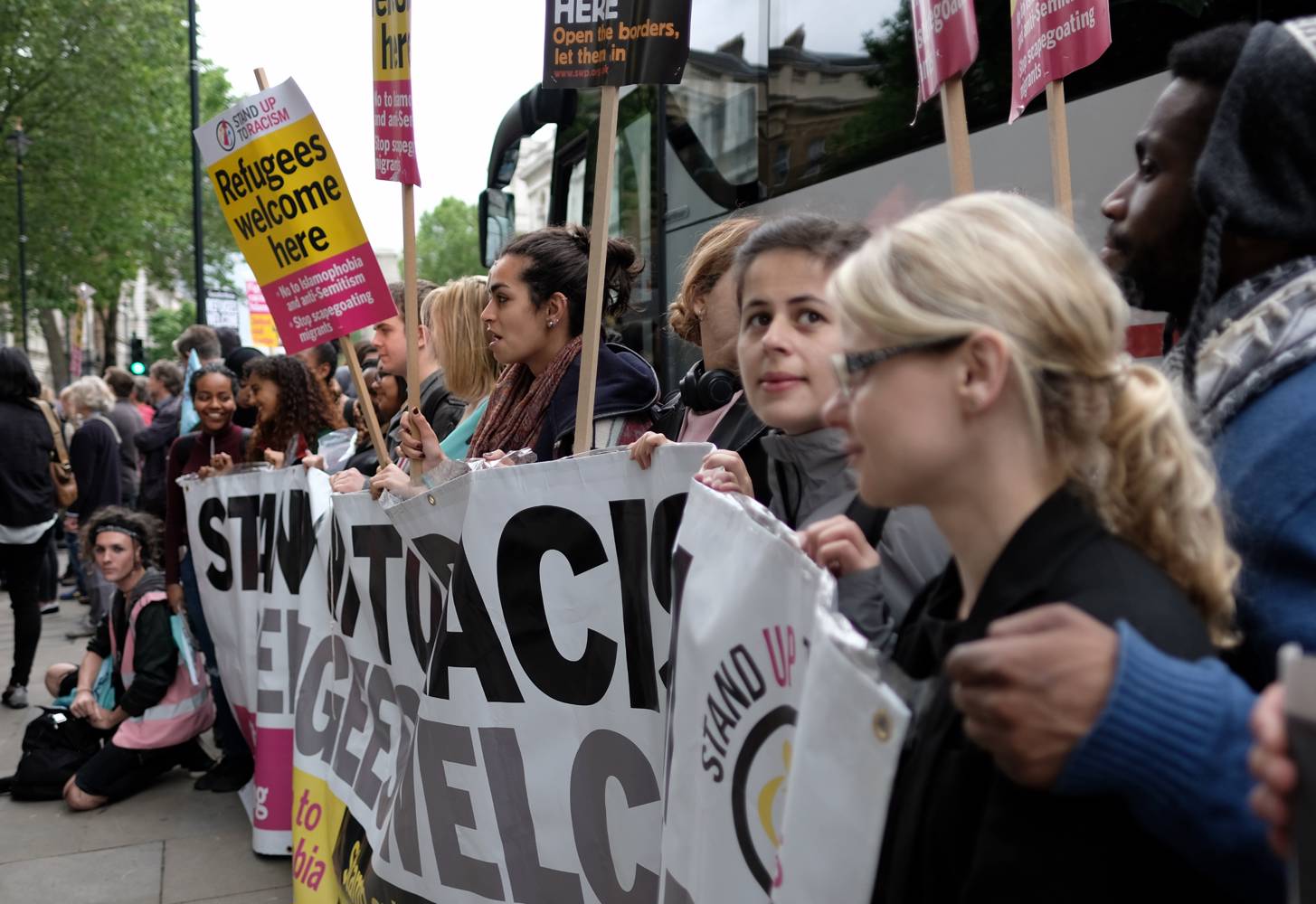
Immediately after the European Union (EU)-Turkey deal on refugees was negotiated in March 2016, as number of arrivals from Turkey dropped and the Balkan route was supposedly “closed”, the so-called “European refugee crisis” seemed to fade away from public attention. The summer of 2018, however, was again marked by a seemingly new escalation in the conflict between states and non-governmental organizations (NGOs) engaged in migrant search and rescue activities in the Mediterranean. The newly elected right-wing Italian government announced that it would “close off” the country’s harbours to search and rescue ships, and promised a crack-down on what was defined as the “welcoming business” of NGOs, charities, cooperatives and associations active in the field of asylum seekers reception.
This development, like many others across the continent, highlighted the struggle of the EU and its member states’ to govern the many emerging manifestations of compassion and solidarity towards migrants at Europe’s borders (Pallister-Wilkins, 2018). As such, it can be read as a manifestation of the European geographies of what scholar William Walters, already in 2011, defined as “humanitarian borders”: border spaces characterized by the confluence of security mandates of ‘control’ and humanitarian concerns of ‘rescue’ (see also Pallister-Wilkins, 2018). Characterized as they are by complexity, heterogeneity and polymorphism (Walters 2011, p. 153; see also Burridge et al., 2017), the humanitarian borders of contemporary Europe are not merely instruments for the control of mobile bodies. As recent research has highlighted, they are also sites of resistance, solidarity, aid and activism, and indeed spaces of discipline and repression of these forms of political agency (Kallio et al., 2019; Stierl, 2017; Pallister-Wilkins, 2018; Tazzioli, 2018). In recent years, humanitarian borders have become new sites of intervention for traditional humanitarian actors and governmental agencies, but also, increasingly, for volunteer and activist initiatives by ‘ordinary’ citizens.
In this project, we set out to explore these citizen-led forms of helping others emerging at the humanitarian borders of Europe. Our starting hypothesis is that whereas humanitarian regimes of intervention have historically responded to situations where the state is unable or unwilling to assist crisis-affected communities; the emergence of what we call citizen-humanitarian spaces at Europe’s borders unfolds as a result of an expanding security apparatus set up to ‘protect the borders’ (see Pallister-Wilkins, 2016). Theoretically, we set out to interrogate the shifting relation between humanitarianism, the securitization of border and migration regimes, and citizenship. In doing so, we are inspired by literature that has critically expanded notions of citizenship to include practices and subjects that are traditionally excluded from institutionalized representation and formally defined polities (Ehrkamp and Leitner, 2006; Isin, 2008; Staeheli et al. 2012; Kallio and Mitchell, 2016).
By using the term “citizen humanitarianism”, we thus refer to the dispersed actors that promote practices of refugee aid “from below”, autonomously from established humanitarian organizations. We are thus interested in critically examining the “do-it-yourself” character of refugee aid practices performed by non-professionals coming together to help in informal and spontaneous manners, often with limited and unsophisticated resources, and the trajectories these initiatives may have, be they NGO-ization and co-optation by institutional humanitarianism, politicization or disappearance. How, if at all, do these new humanitarian practices challenge established conceptualizations of membership, belonging and active citizenship? Is humanitarianism being politicized by its proximity to securitized border spaces, and how? We are notably interested in processes of criminalization of humanitarian aid in these European border spaces.
Our aim in this work is to advance empirical knowledge by bringing together rich, in-depth qualitative studies of a number of such actors operating in different European countries, across the North-South and East-West divide. We particularly welcome case studies focusing on the following three interrelated categories of humanitarian practices:
Activist humanitarianism, in which refugee aid constitutes a form of contestation of border regimes.
Local and international volunteering for refugees, emerging spontaneously in emergency contexts, or building on pre-existing religious and civic charity traditions (e.g. sanctuary spaces etc.)
Diaspora and migrant humanitarianism, encompassing not only networks of mutuality and solidarity among refugees and migrants, but also new engagements with activism, volunteering, and no-border political mobilization by diaspora groups.
For each of these emerging forms of humanitarianisms, we seek contributions that focus on two main aspects: their relation with states and European governmental agencies, including the tensions evidenced by the recent trends towards the criminalization of humanitarian aid, and conflict, cooperation and co-optation by established, professionalised humanitarian actors.
Timeline:
Deadline for submitting paper abstracts (300 words): 10 May 2019
Response from editors: 29 May 2019
Full papers to be submitted by 30 August
Send paper abstracts to margab@prio.org and elisa.pascucci@helsiniki.fi





